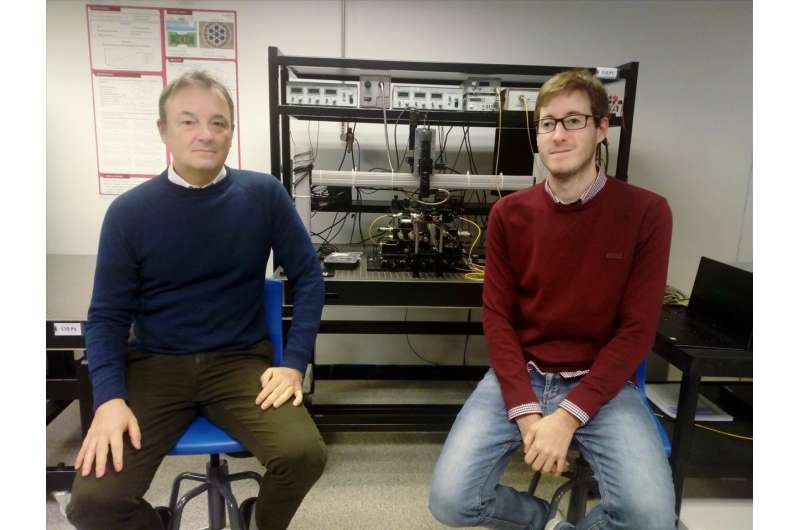Fail-safe, reconfigurable chips

Researchers at the Telecommunications and Multimedia Applications Institute (iTEAM) of Valencia's Polytechnic University (UPV) have taken a step toward creating an infallible chip. They have developed an advanced method for the analysis and à la cart configuration of photonic circuits, which makes it possible to pre-emptively deal with the possible faults that a chip may suffer and reduce their impact in the design phase, before the chips become operational.
The work of the UPV researchers is centred on generic-purpose photonic circuits, which provide multiple functionalities while using a single architecture, in an analogue way to how microprocessors work in electronics. "With the tools we have developed, we will simplify and optimise the manufacturing and performance of these chips," says José Campany, researcher at the Photonics Research Labs (PRL) of the iTEAM UPV.
According to professor Campany, faults often take place within the components of the circuits, which end up affecting their final performance. "The technique makes it possible to predict where the circuit will fail and configure the other components to make up for these deficiencies, thus guaranteeing their maximum performance," he says. All this is invisible to the user.
"The analysis method is relatively simple: Each one of the units of the circuit is configured, and by applying mathematic induction techniques, offers a diagnosis of how the circuit would behave in each of the ports. Based on this diagnosis, we can conduct the modifications we see necessary in the configuration," explains Daniel Pérez, fellow researcher at the PRL-iTEAM of the UPV. "Furthermore, the method enables us to simulate larger circuits and validate their capabilities with current manufacturing techniques."
Another benefit of the work is the chip cost decrease. "If you are able to optimise the circuit with software, the manufacturing phase is not as demanding, which makes it possible to increase the performance when producing these devices," adds Campany.
Chips with Artificial Intelligence
The work developed by the iTEAM researchers also entails a first step for the design and manufacturing of photonic circuits with artificial intelligence techniques. "With this method, we can use machine learning algorithms to synthesise and design circuits. Current day work is the seed that an automated learning method needs," adds Daniel Pérez.
The next challenge for the UPV iTEAM researchers is to merge their most recent works for the design of hardware of the circuits with advanced algorithms that make it possible to squeeze all the potential out of the integrated optics.
More information: Daniel Pérez et al. Scalable analysis for arbitrary photonic integrated waveguide meshes, Optica (2018). DOI: 10.1364/OPTICA.6.000019
Journal information: Optica
Provided by Asociacion RUVID


















